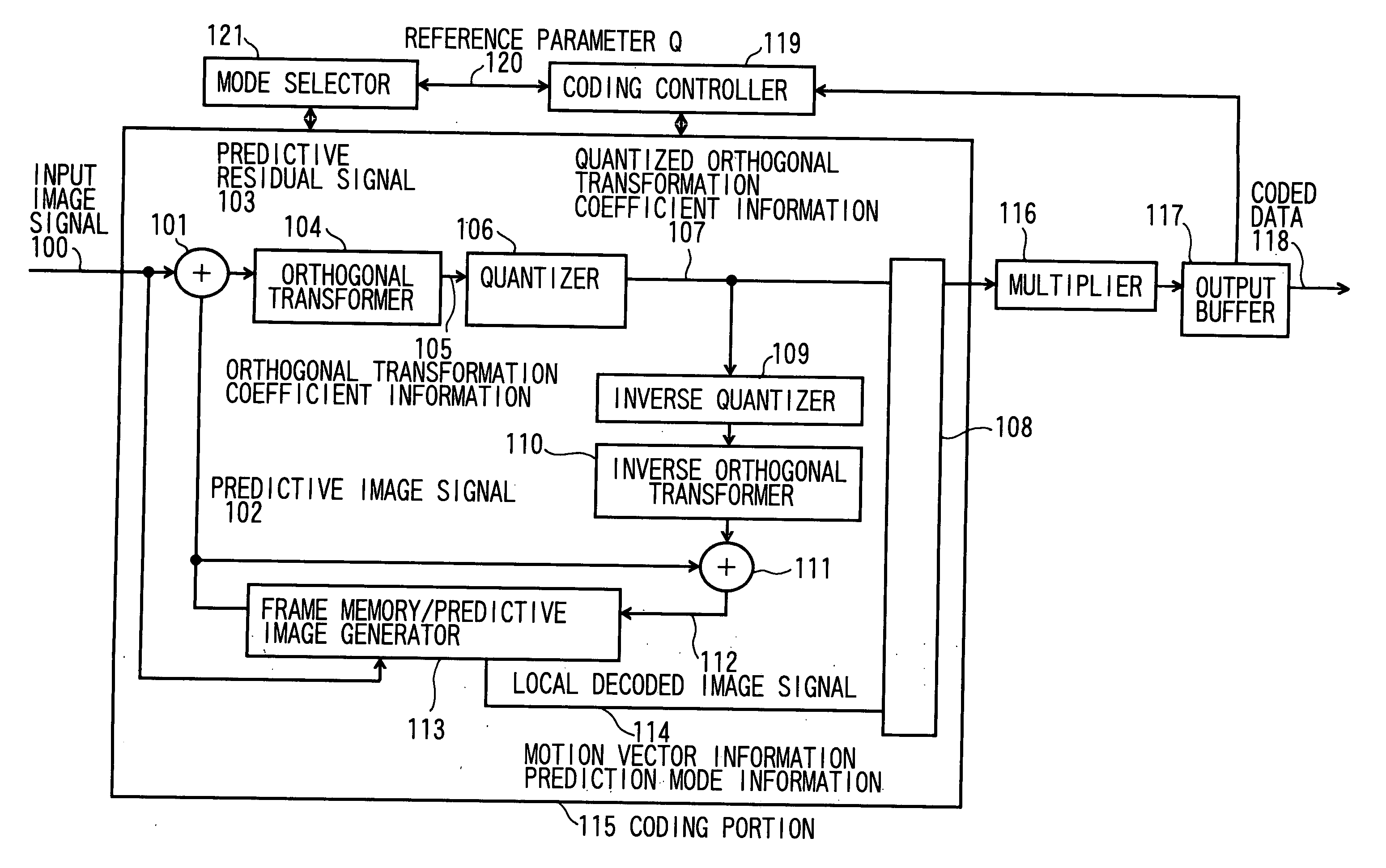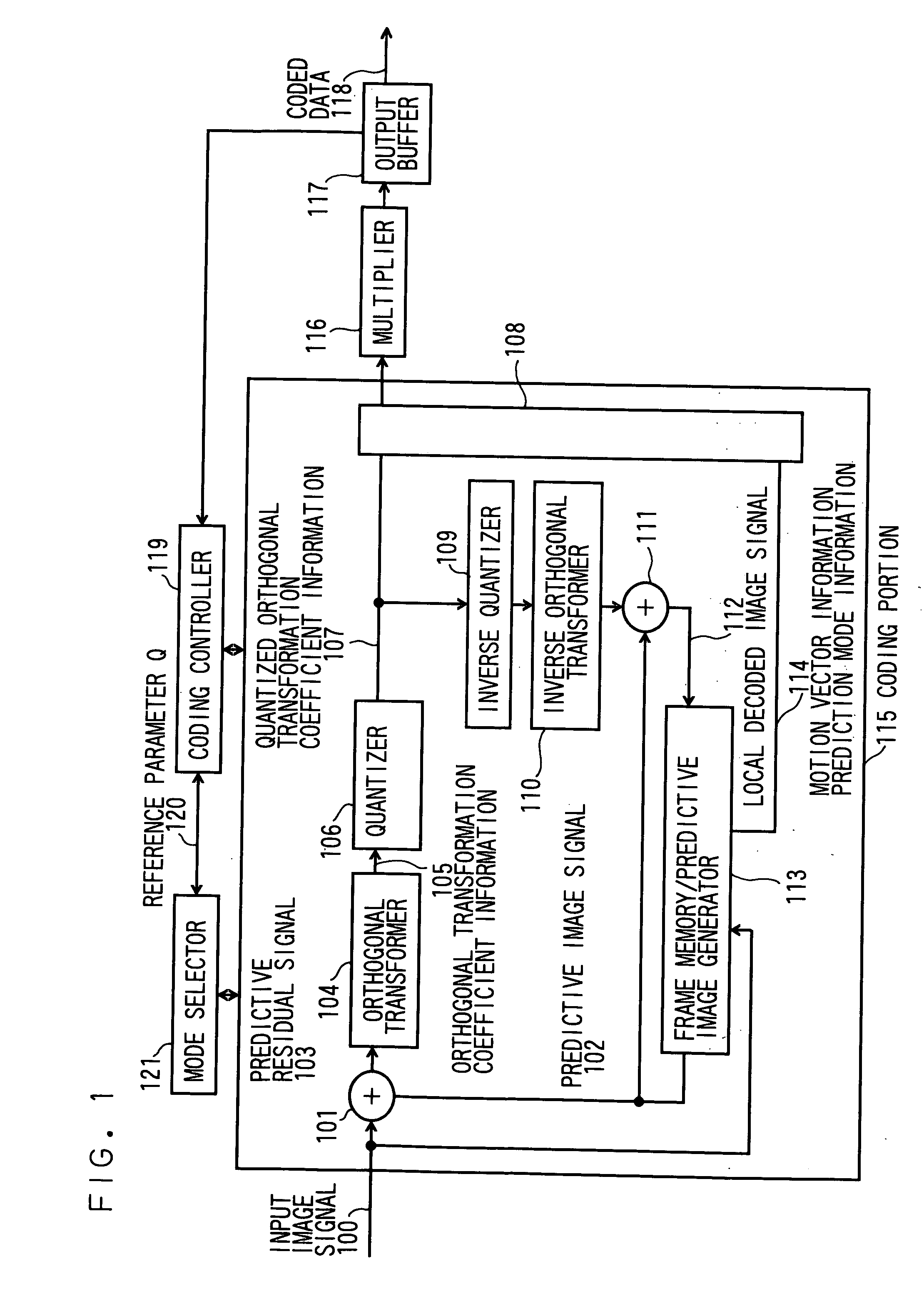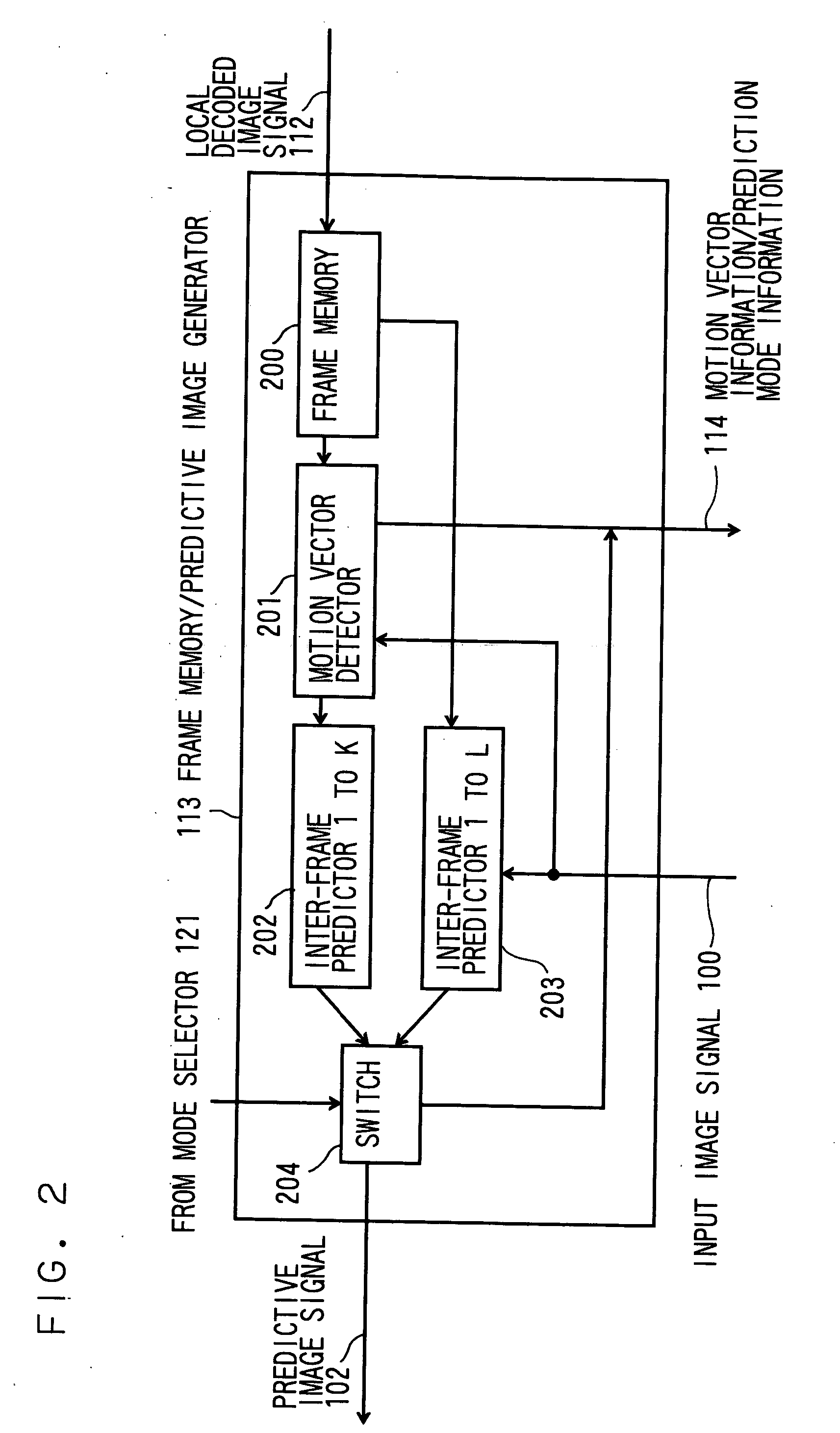Image coding control method and device
- Summary
- Abstract
- Description
- Claims
- Application Information
AI Technical Summary
Benefits of technology
Problems solved by technology
Method used
Image
Examples
Embodiment Construction
[0026] Embodiments according to the invention will be described hereunder with reference to the accompanying drawings.
(1) Construction of Image Coding Device
[0027]FIG. 1 shows an image coding device for coding a motion picture according to an embodiment of the invention.
[0028] A motion picture signal is input as an image signal 100 to the image coding device on a frame basis.
[0029] The difference between an input image signal 100 and a predictive image signal 102 is taken by a subtracter 101 to generate a prediction error signal 103. On the prediction error signal 103 thus generated, orthogonal transformation, for example, discrete cosine transformation (DCT) is conducted by an orthogonal transformer 104. Orthogonal transformation coefficient information 105, for example, DCT coefficient information is achieved in the orthogonal transformer 104. The orthogonal transformation efficiency information 105 is quantized by a quantizer 106 to achieve quantized orthogonal transformatio...
PUM
 Login to View More
Login to View More Abstract
Description
Claims
Application Information
 Login to View More
Login to View More - R&D
- Intellectual Property
- Life Sciences
- Materials
- Tech Scout
- Unparalleled Data Quality
- Higher Quality Content
- 60% Fewer Hallucinations
Browse by: Latest US Patents, China's latest patents, Technical Efficacy Thesaurus, Application Domain, Technology Topic, Popular Technical Reports.
© 2025 PatSnap. All rights reserved.Legal|Privacy policy|Modern Slavery Act Transparency Statement|Sitemap|About US| Contact US: help@patsnap.com



